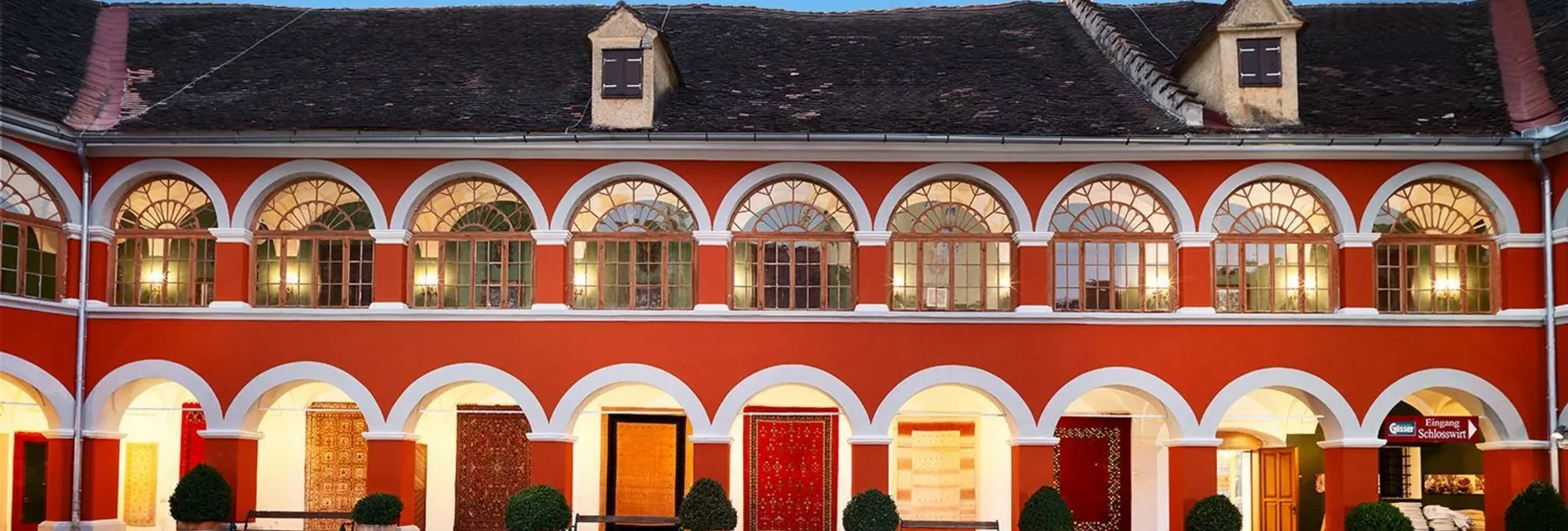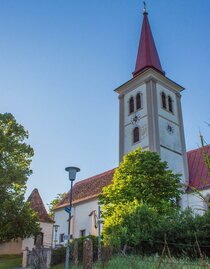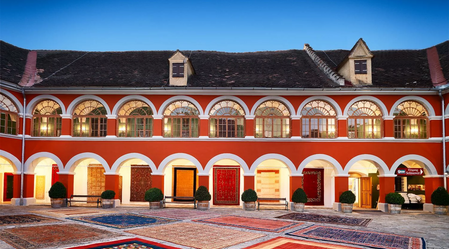

Culture & tradition
Awaiting visitors in the Thermen- & Vulkanland Steiermark is a world of artisan craft, art history and cultural gems. In the summer months, the Pannonian climate means that you can enjoy balmy evenings under a starry sky with a drop of regional wine at your fingertips, thanks to Styrian growers. By day, artisan craftsmen and women demonstrate their skill and dexterity at their workshops.
A tour of discovery through the Thermen- & Vulkanland Steiermark brings visitors to numerous castles and palaces, threaded along the “Schlösserstraße” (“Castle Road”). Many of these are open to the public, such as the Pfeilburg and Kornberg Palace. Start out at the majestic Riegersburg, possibly the most indomitable historical fortification in the Occident, still owned by the Prince of Liechtenstein and one of Styria’s most significant tourist attractions. Kapfenstein Palace, for instance, has become a true temple of culinary delights. It is where the Winkler-Hermaden family grows internationally acclaimed wine on volcanic soil. Alongside this, a handful of small museums and exhibitions invite visitors to partake of even more cultural delights, with fascinating exhibits on all sorts of subjects such as weddings through time, tobacco production and ‘taking the waters’ in imperial times. And in Bad Radkersburg, which together with Fürstenfeld is a member of the Small Historic Towns, visitors can experience 700 years of town history up close and personal.
Costume – expressing the warmth of the region
To this day, men and women very much enjoy wearing their traditional Styrian dress. Whether at weddings, parties or celebrations, you’ll see people everywhere garbed in folk attire. The German word for costume “Tracht” comes from the verb “tragen” (to wear), and they are certainly wearable. Particularly in rural areas, men, women and children wear traditional costumes to express where they’re from and their sense of belonging – in a very flattering way. “I’m a lass from Raabtal”; “I’m a lad from Almenland”; “I’m a Blumau boy”; “I’m ‘Vulkanland’ through and through”: fruitful, authentic and eruptive: You’ll spot traditional dress everywhere you go, and you’ll notice that regional colours are very important.
The smock, bodice and apron, as well as details such as stripes, pleats, trims, ornaments, stitching and embroidery all add interest. A piece of highly nuanced cultural history has blossomed afresh with unexpected variety. People want to express their (very specific) affiliations, which explains the trend for traditional costume and even making your own Dirndl
Chasing after legends
Sunken cities, mysterious courtyards, enchanted castles, ghostly clearings... In Styria you don’t have to go far before bumping into a place of myth and legend.
Stories abound of the “Schratl” in Krusdorf, said to bring good luck; of the female vampire Carmilla who roams the town of Hainfeld; of giants in the burial mounds of Straden; of entire legions of witches and other shady characters at Riegersburg Castle. It is said that the “Ahnfrau” still waits for salvation on the ruins of Klöch, and the famous folklore character “Till Eulenspiegel” did Feldbach the honour of paying it a visit: The story goes that all the people of Feldbach were told to line up in a row, whereupon he would bestow immeasurable wealth on every seventh person. They had until midnight to arrange themselves, but of course nobody could agree on where to stand, as everybody wanted to take the prime spots. In the end, there was only complete chaos. Till Eulenspiegel held up a mirror to the people and smilingly went away without a word. Fantasy and reality are often closer than you may care to admit.
Book tip: Johann Schleich: “Törin, Schratl und Nachtahn” illustrated by Roswitha Dautermann, Vehling Verlag 2010.
Singing, playing and dancing, the Styrian way
Custom and folk culture has experienced a modern renaissance in the 21st century. All the old traditions are being dusted off and revived. Music and dancing have always taken centre stage in the Thermen- & Vulkanland, and even now are an expression of pure joie de vivre. Local people are proud of their musical roots and love to turn to their ancestral folk music and dancing; these have evolved independently and reflect the lifestyles of village societies and small towns.
Styrian music is played on the Styrian harmonica (colloquially called the “Quetschn”, “Rumpl” or “Ziachorgl”), the Styrian dulcimer, the Alphorn, and, in many places, the fife or the saxophone. Music clubs are firmly established in every town and perform at local festivities.
Styrian singing can also be heard everywhere – usually in several clubs. Nobody in recent times has described the Styrians and their love of music better than the “homeland poet” Reinhard P. Gruber. In his book “Die ganze Steiermark ist ein einziger Jodler” (“All of Styria is a Yodeller”), he writes that notes are dearer to Styrians than words, and that their vocabulary would be better described as a discography. Every sound that a Styrian makes – the poet continues – is a musical one, and they are virtually born with the ability to yodel.
Dancing, more specifically, Styrian folk dancing, was once a favourite form of entertainment for local people. They especially loved the “Steirer”, a slow dance with lots of arm movements. In accompaniment, people would often sing “Gstanzln”, short verses usually four lines long and customarily made up on the spot. Thousands of these “Gstanzln” have endured to this day, and even now are still being sung, invented, and lost.
Pilgrimage & churches
Drifts of autumn mist hang over the Hirschbirn (A type of pear) valley like a blanket. High up above, in the warming light of the sun, stands the Gothic pilgrimage church on the Pöllauberg. For hundreds of years, people have journeyed to the Pöllauberg, and it remains a place of mythical allure even today. The Pöllauberg, however, one of Styria’s oldest and most significant places of pilgrimage, is not alone. The old road of the “Romei”, pilgrims to Rome, also ran through eastern Styria, as did the route from the south towards Mariazell. Pilgrims and wayfarers have a long history behind them in this part of the country. In the modern age, so stressful, noisy and lonely, people are rediscovering the benefits of meditative walking and spiritual journeys.
The small market town of St. Anna am Aigen is referred to as the Bethlehem of Styria. 36 priests come from the parish of St. Anna am Aigen, and four of these have become well known beyond Styrian borders. They are Cardinal Franz Andreas Frühwirth, Bishop Leopold Schuster, Director of Cathedral Music Anton Lippe, and the current Archbishop of Salzburg Franz Lackner.















